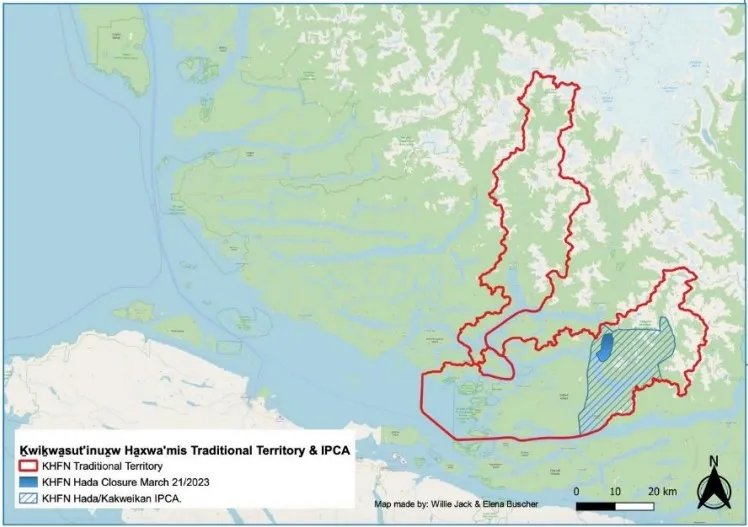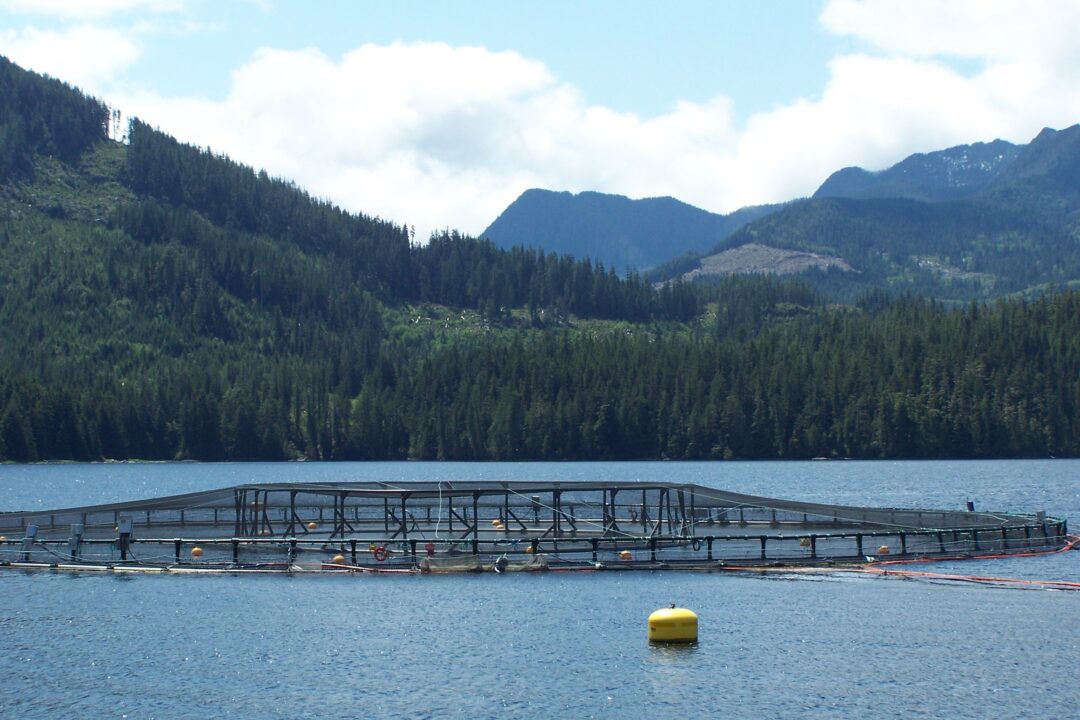In a historic move, hereditary chiefs from the Kwikwasuti’nuxw Haxwa’mis First Nation (KHFN) gathered in Sooke on November 16th to sign an agreement declaring 40,000 hectares of ancestral land as an Indigenous Protected and Conserved Area (IPCA). The proclamation covers Hada (Bond Sound) and Kakweikan (Thompson Sound) within the Broughton Archipelago, just east of Port McNeill on the mainland. The decision marks a significant step in the Nation’s efforts to safeguard their land, waters and abundant resources for future generations.
“This IPCA represents our vision for a future where all beings thrive.”
Rick Johnson, Hereditary and Elected KHFN Chief, Tlakuglus
“This IPCA represents our vision for a future where all beings thrive,” said Hereditary and Elected KHFN Chief, Tlakuglus, Rick Johnson, in a statement. “Upholding our laws will ensure that the medicines, the foods, the cedar, the salmon, the eulachon and all of the maʼmikas [natural resources] that are sacred to our people will always be there.”
Saving Pacific Salmon
Under the new designation, vital watersheds, cultural and village sites, and important ecological habitats will be protected. The Kwikwasuti’nuxw Haxwa’mis First Nation has been outspoken about protecting Pacific salmon from being overfished to extinction on their territory. They have been critical of Fisheries and Oceans Canada and its bureaucracy, which has been slow to respond to their growing concerns.

As a result, the Nation decided to move forward to protect salmon and other species, as well as the surrounding land, under their ancestral laws. Unlike a federally-mandated Marine Protected Area, the KHFN independently declared the region an Indigenous Protected and Conserved Area according to their constitutionally enshrined Indigenous Rights.
In a press release, the KHFN called the IPCA “the next step in protecting all salmon migratory routes and ensuring wild salmon populations will be safe from harmful industrial activities moving forward.” Other culturally important species covered by the IPCA include eulachon, littleneck clams, and Pacific herring.
Banned Fish Farms
Earlier this year, the KHFN was part of a coalition of Broughton Islands First Nations, including the ‘Namgis and Mamalilikulla, that decided to remove all Atlantic salmon fish farms from their territories. “Sadly, we have been witnessing the devastating decline and collapse of wild salmon and other marine species in our territories that have been the foundation of our food, culture, and way of life for millennia,” Johnson said in a statement at the time.

The Kwikwasuti’nuxw Haxwa’mis First Nation’s new IPCA will be neighbouring the Gwaxdlala/Nalaxdlala IPCA declared by the Mamalilikulla First Nation in November 2021. The Skeena recently spoke with Mamalilikulla Chief John Powell about the significance of his people returning to their territory after a century to protect it according to their own ancestral law.
Provincial Support
The KHFN announcement was made with no government representatives present, but BC Minister of Water, Land and Resource Stewardship Nathan Cullen said he was not surprised and that his government supports the declaration. “We see it as an important beginning of the conversation in regards to what the conservation is looking for. We are going to reach out … I just saw the declaration recently,” said Cullen to Chek News.
“Natural resources will be better protected, food security will be advanced, Indigenous employment will increase, and the economy will stabilize.”
Hereditary Chief Dr. Robert Joseph
“In the era of reconciliation, supporting the KHFN with their IPCA is the right thing to do. Natural resources will be better protected, food security will be advanced, Indigenous employment will increase, and the economy will stabilize,” stated Hereditary Chief Dr. Robert Joseph in the release. “The government should welcome a partnership with KHFN on this IPCA. Everybody wins – Crown governments, KHFN, the territory, and the public.”
The KHFN also stated their IPCA plan is part of a broader effort for cultural revitalization. Some of the land will also be used for the development of the Nawalakw Healing Centre and Cultural Youth Camp, with cultural and language programs held year-round.





I’m happy to see this First Nation taking the initiative in a Sovereign decision for the future.